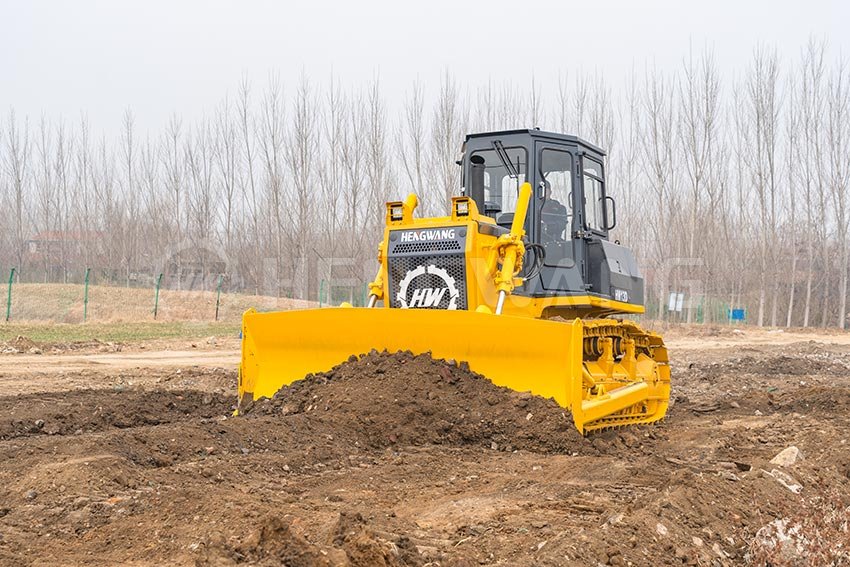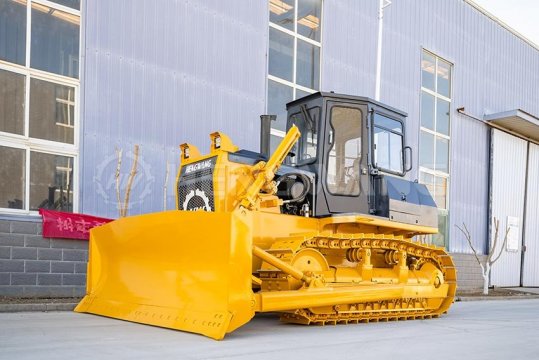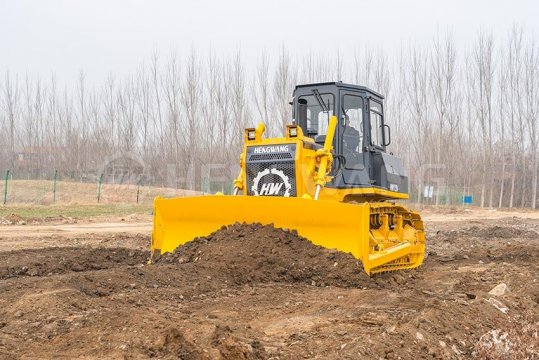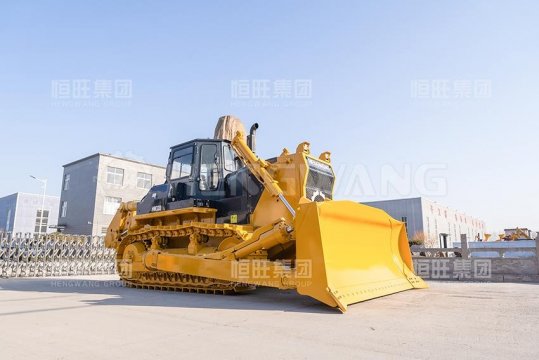In earthwork, mining operations, and road construction, bulldozer blade types directly affect equipment efficiency and application range. Different bulldozer blade types feature unique structural designs and functional focuses—choosing the wrong type can reduce operating efficiency by over 30%. This article analyzes the classification, selection logic, and maintenance points of bulldozer blade types to help you match the optimal configuration.
1. Common Bulldozer Blade Types and Their Core Characteristics
Bulldozer blade types are mainly classified by structure and function, with three mainstream types as follows:
(1) Straight Tilt Blade: The most basic bulldozer blade type. It is vertical to the ground and can tilt left/right (maximum 15°), suitable for basic operations like site leveling and shallow ditch excavation. With a simple structure and easy maintenance, it is standard for small and medium bulldozers .
(2) Angle Blade: A specialized bulldozer blade type. It can rotate 30°-45° horizontally to push soil directionally to one side, ideal for scenarios requiring concentrated soil piling such as road slope trimming and river dredging. Its efficiency is 25% higher than straight tilt blades.
(3) shaped Blade: A heavy-duty bulldozer blade type. Its arc design increases volume by 40% compared to straight blades of the same width, while heightened side plates reduce soil scattering. It is perfect for mining stripping and large filling projects, significantly boosting single-pass soil pushing capacity.
2. How to Choose Bulldozer Blade Types by Scenario?
Selecting bulldozer blade types follows the "scenario adaptation" principle:
(1) Site Leveling: Prioritize straight tilt bulldozer blade types. Their flexible tilting function quickly adjusts ground slope, ensuring flatness errors ≤5cm, especially suitable for pre-construction site preparation.
(2) Short-distance Soil Transport: Angle blades are a better bulldozer blade type. Directional pushing reduces secondary soil handling—during highway shoulder construction, they can accurately push subgrade soil to slopes, cutting manual trimming costs.
(3) Heavy-duty Filling Projects: U-shaped bulldozer blade types are a must. Their arc structure forms a "soil collection cavity," enabling "one-pass multi-transport" in dam filling and mine dump operations, increasing daily earthwork volume by over 50%.
(4) Special Terrain Operations: For wetlands or soft ground, choose specialized bulldozer blade types with "floating function." The blade adjusts height with ground undulations to prevent equipment from getting stuck due to excessive penetration.
3. Key Parameter Comparison of Bulldozer Blade Types
Performance differences between bulldozer blade types are as follows:
(1) Straight Tilt Blade (Basic Type): - Applicable Load: Medium-light - Pushing Efficiency: Moderate (suitable for small sites) - Maintenance Cost: Low (simple structure, few wearing parts) - Typical Scenarios: Construction site leveling, farmland renovation
(2) Angle Blade (Directional Operation Type): - Applicable Load: Medium - Pushing Efficiency: High (directional pushing reduces scattering, 25% efficiency gain) - Maintenance Cost: Medium (hydraulic rotation mechanism requires regular maintenance) - Typical Scenarios: Road slope trimming, river dredging
(3) U-shaped Blade (Heavy-duty Type): - Applicable Load: Heavy - Pushing Efficiency: High (arc design increases volume, 40% higher single-pass capacity) - Maintenance Cost: Higher (more welds in arc structure, requiring regular stress crack checks) - Typical Scenarios: Mining stripping, dam filling
4. Maintenance and Upgrade Suggestions for Bulldozer Blade Types
(1) Daily Maintenance: Regardless of bulldozer blade types, check bolt tightness and blade edge wear daily. Clean adhered soil inside the blade after heavy operations to prevent structural deformation.
(2) Wear Repair: When blade edge wear exceeds 10mm, perform timely surfacing repair. Different bulldozer blade types require distinct repair techniques (e.g., U-shaped blades need to maintain arc consistency).
(3) Function Upgrades: Add accessories to existing bulldozer blade types as needed—e.g., install ripper teeth on straight tilt blades for "push-ripple integration," or add side baffles to angle blades to reduce soil loss and improve versatility.
Hengwang Group Bulldozers : Diverse Blade Types for Full-scenario Operations
Hengwang Group’s bulldozer series offers a wide range of bulldozer blade types to meet different needs: - Straight tilt blades are forged from 16Mn high-strength steel, with 30% improved wear resistance, suitable for small/medium site leveling. - Angle blades feature hydraulic rotation mechanisms with 20% faster response and ±2° precision, ideal for fine slope trimming. - U-shaped blades with 3-8m³ volume, optimized via fluid dynamics, reduce soil scattering to ≤5%, perfect for heavy-duty projects. Hengwang bulldozer undergo rigorous testing to ensure all bulldozer blade types deliver peak performance. Backed by the "four-dimensional integration" service system, we provide custom blade manufacturing, wear repair, and upgrade services to keep equipment adaptable to new scenarios.
Take Action Now: Share your operation type and earthwork volume to get an exclusive bulldozer blade type recommendation. The Hengwang technical team responds within 24 hours! Choosing the right bulldozer blade types can achieve a "qualitative leap" in operating efficiency. Hengwang bulldozers, with diversified blade configurations, provide precise solutions for every scenario.

 Bulldozer Attachments for Forestry Work: Core Equipment to Unlock High Efficiency in Forestry Operations
Bulldozer Attachments for Forestry Work: Core Equipment to Unlock High Efficiency in Forestry Operations
 Bulldozer Blade Types: Core Configuration for Adapting to Different Operating Scenarios
Bulldozer Blade Types: Core Configuration for Adapting to Different Operating Scenarios
 Swamp bulldozer: An Efficient Solution for Operations in Muddy Environments
Swamp bulldozer: An Efficient Solution for Operations in Muddy Environments